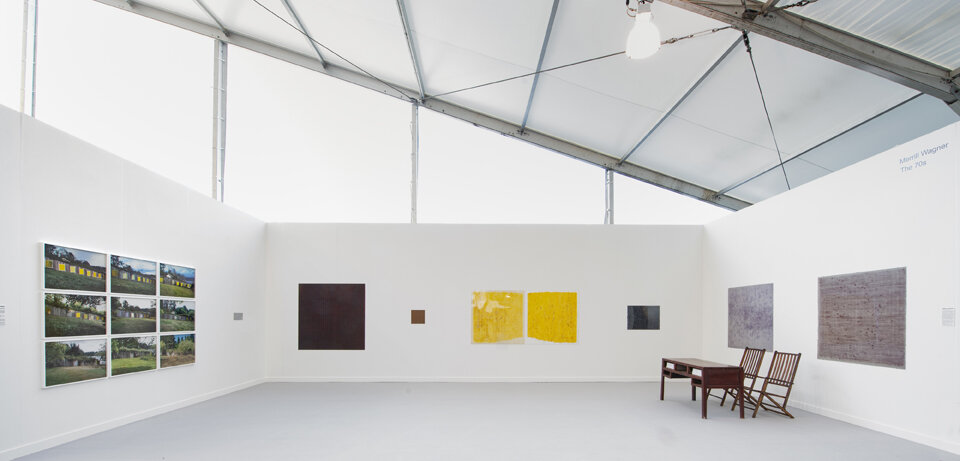
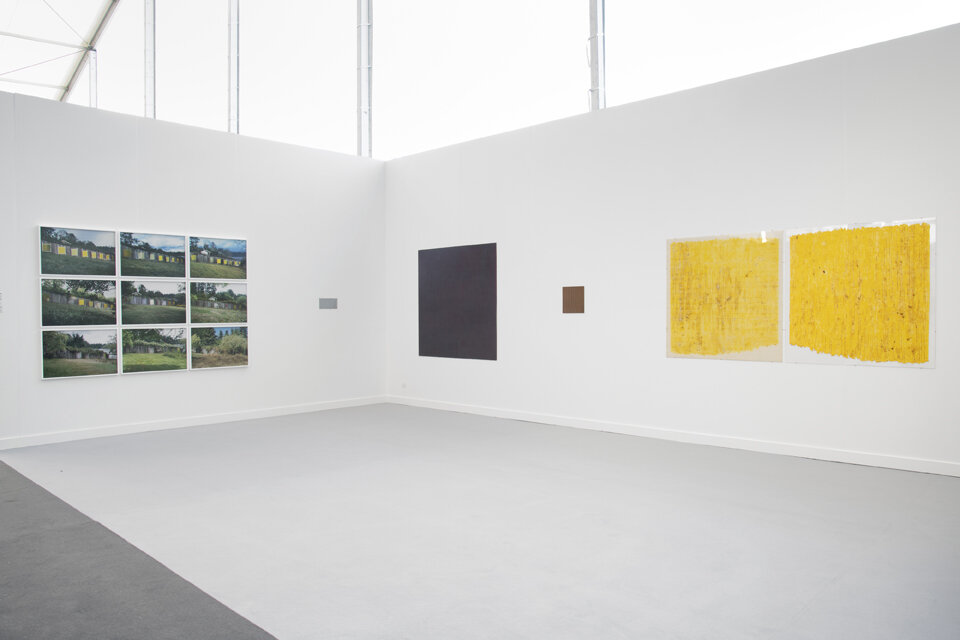
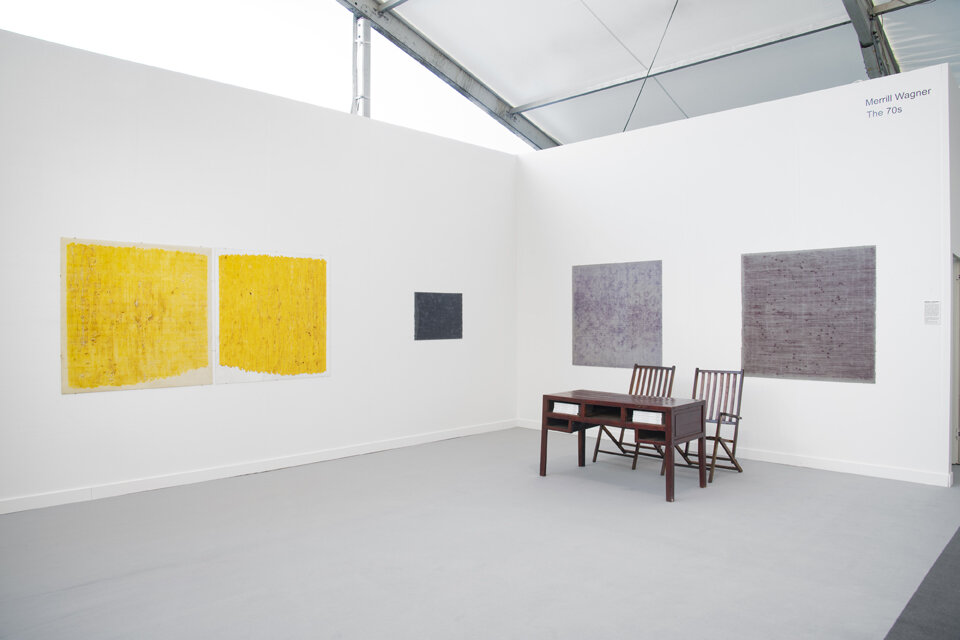
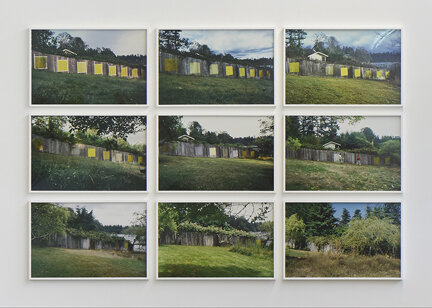
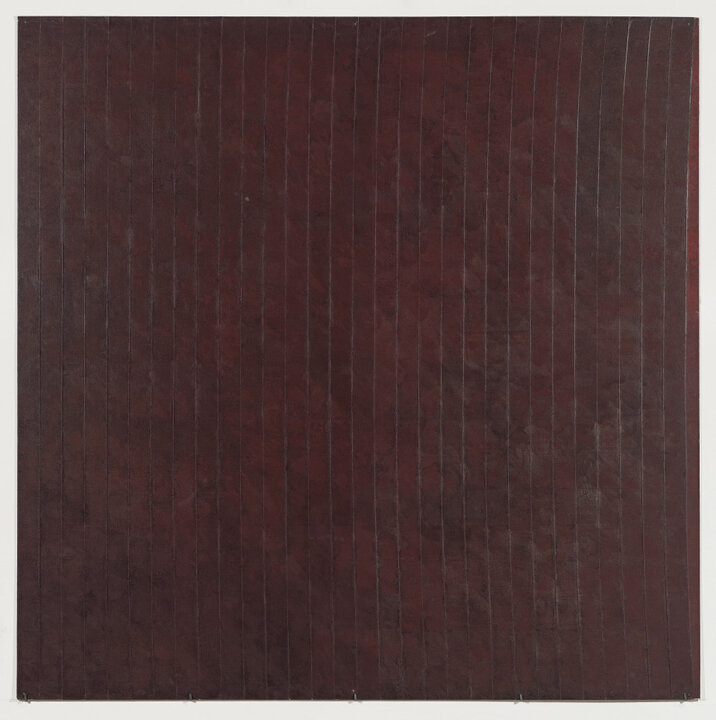
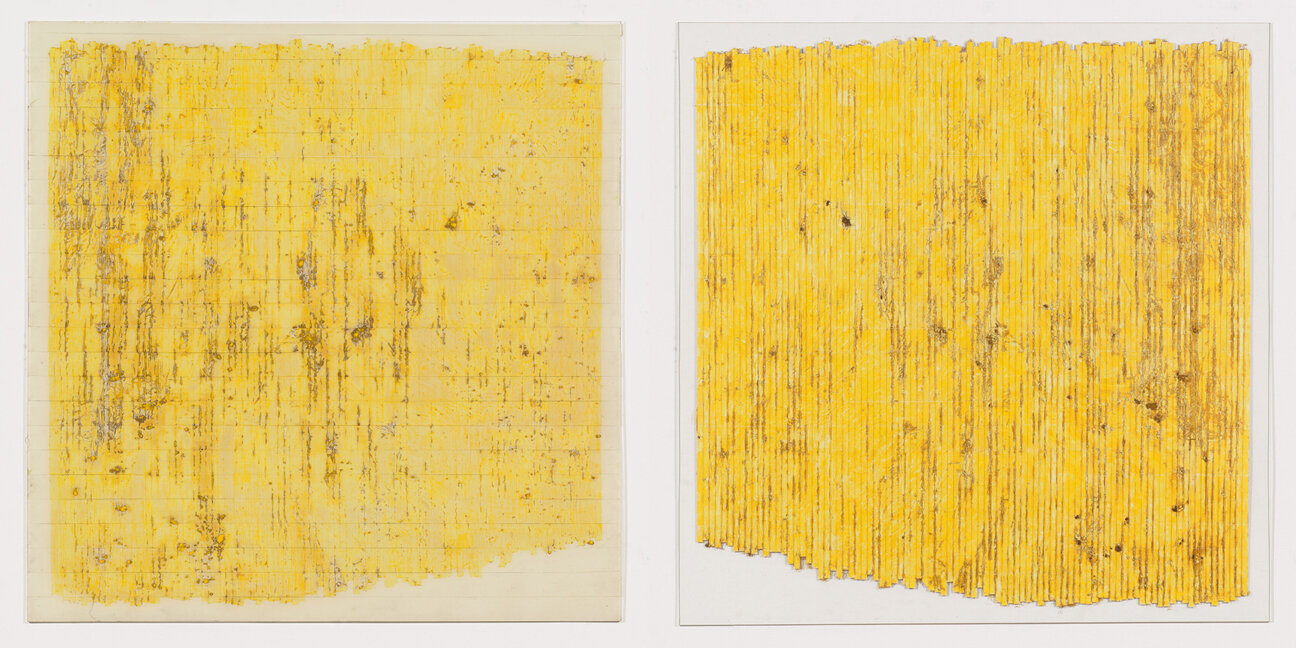
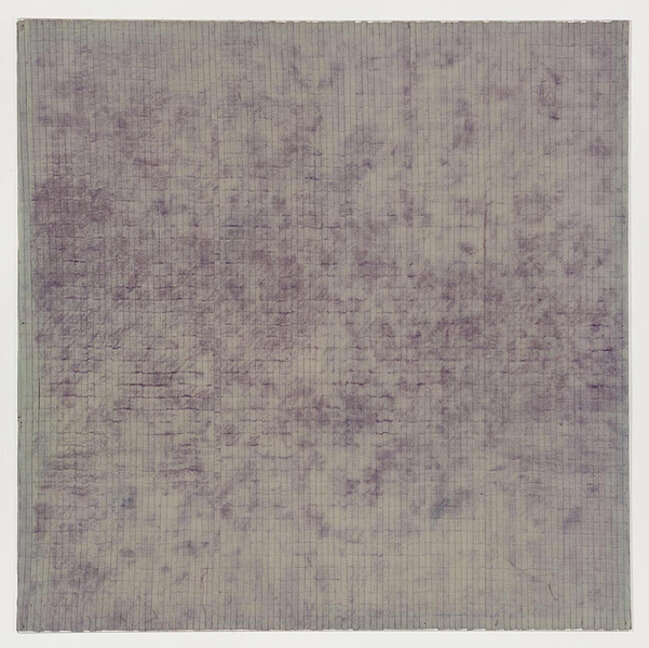
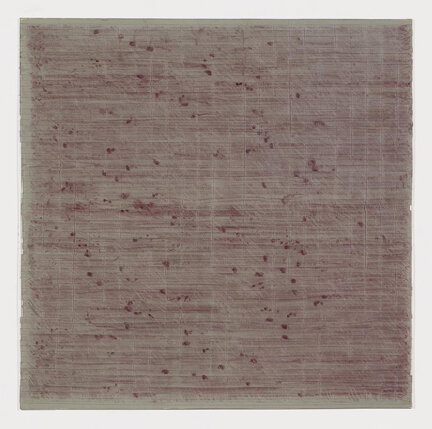
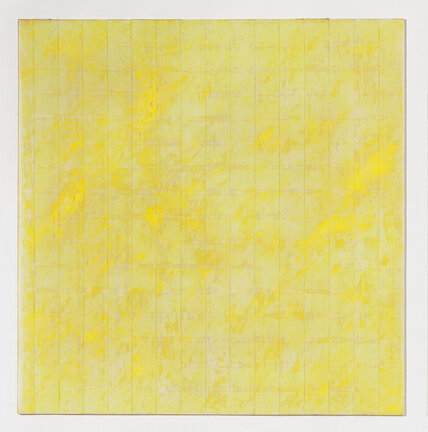

NEW YORK
Merrill Wagner: Work from the 70s
Frieze Art Fair NY, Spotlight Section
May 3 - 6, 2018
Randall’s Island Park
May 3–6, 2018
Format Magazine: The Most Memorable Booths at Frieze New York 2018
Born 1935 in the Pacific Northwest, Merrill Wagner has lived in New York since 1957. Wagner works in abstraction in a wide range of media. This includes drawing, painting, time-based projects, book works and sculptural interventions. Her work aligns itself with both the principles of Minimalism, and the ethics of an alchemist. She manipulates materials to make works that are about the passing of time and material transformation.
In The 70’s Zürcher Gallery exhibits work from one of her strongest periods. Many of the pieces showcase her unique process with using fabric tape and Plexiglas. The exhibit also includes a collection of small-scale work, one installation-based painting, striped works, a quintessential landscape painting, and a cobalt blue Untitled monochrome. Each piece touches on the cornerstones of Wagner’s idiosyncratic process. They all help explain how the role of chance, order, and time, plays into her work.
Wagner considers pigments and supports for their degradation, reaction to light, and effect over time. The work exists only through its transformation in atmosphere rather than its stability. Robert Storr refers to Wagner as a ‘materialist painter’ in his essay Matters of Fact and of Vision. Storr notes that her, “color is never purely spectral and absolute but always the attribute of a particular pigment applied to a particular surface that is subsequently exposed to a particular set of atmospheric conditions and degrees and types of illumination.” The particularities of paint and their application are key to the works from the 1970’s.
Included in the exhibition is a suite of small works. John Yau explains that, “For many of the abstract drawings that Wagner completed between 1971 and 1980, she used graphite on paper, masking tape on board, masking tape and graphite on paper, or straight masking tape on paper. What all there drawings have in common is the absence of a contour line. When Wagner makes a grid of square, or a field of vertical and horizontal lines, or a stack of evenly spaced horizontal bands, what the viewer sees is the artist’s measured distribution of value, evenly spaced across an empty surface. Rather than use a line to make a shape, she presses the pencil or graphite against the paper, making a series of short diagonals whose value is the focus.” This focus on value rather than line continues through her body of work. The paintings and their attributes take up space. They are not merely outlines, their boundaries are less defined. It’s difficult to tell even what form they will begin as and Wagner’s process makes it open what form they will end up. This openness to transformation is a special attribute to her unique vision on the world and in her work.
A large portion of the work at Zürcher Gallery includes paintings made of fabric tape, paint and Plexiglas. Tiffany Bell explained aptly that, “In the mid-1970s, Wagner abandoned the conventional use of paint on canvas and introduced other kinds of surfaces and materials into her work. Having used tape as an incidental tool in her painting, she became fascinated with as something to mark on. Her preoccupation with tape led to a consideration of process and the role of chance in the creative procedure. She started applying bands of tape to paper, Plexiglas, or later slate, and marking the resulting surfaces all over with chalk. A second layer of tape was then layered on top, removed, and affixed to Plexiglas. Seen from the opposite side, traces of the original drawing were thus incorporated into a new context.”
Wagner is an artist indicative of her time and place. The small landscape piece in the main room is only a nod to how the American landscape has influenced her way of thinking. Her use of pigments is akin to the color in nature; it is fading, changing, and constantly becoming something new. Robert Storr perfectly summarizes her when he says, “Wagner, materialist, formalist, empiricist, and poet of the given and the accidental as well of the systematically altered is, in this every respect, an all-American artist to the core.”
Notes on paint
FOR PAINTERS WHO MIGHT QUESTION THE STABILITY OF CONVENTIONAL ARTISTS’ MATERIALS.
First week of August 1983, Merrill Wagner started to paint 8 rectangles of yellow paint, nearly the same color, on an untreated cedar fence at Gravelly Lake in Tacoma, Washington. She used the following different brands of yellow paint (from left to right) :
Sennelier Oil Pastel # 22
Yellow Lecturer’s Chalk
Derwent Oil Pastel # 20-2
Winsor and Newton Oil paint Cadmium Lemon
Caran d’Ache Oil Pastel # 7000240
Winsor and Newton water-color paint cadmium lemon
Marcal oil pastel Azo Yellow
Liquitex acrylic paint Hansa Yellow
Once the paint was laid down, nature was in control of the project. The cedar fence was photographed at intervals between August 1983 and June 24, 1990. These notes on paint are the record of that passage of time.
Merrill Wagner (born 1935 Seattle, Washington) received her BA from Sarah Lawrence College and attended the Art Students League in New York City from 1959 – 1963. She was the recipient of the Andrew Carnegie Prize, National Academy of Design, the Academy Award in Art, American Academy of Arts and Letters both in 2006, and the Hassam Purchase Award, American Academy of Arts& Letters in 2002 amongst others. Wagner has exhibited her work extensively both nationally and internationally, her recent solo exhibitions include: Konrad Fischer Galerie, Düsseldorf in 2018, Works from the 70s, Zürcher Gallery, New York in 2017 and The New York Studio School in 2016 which was accompanied by a book including essays by Tiffany Bell, Naomi Spector, Robert Storr, Lilly Wei and John Yau. Wagner was also included in 1970’s Women and Abstraction curated by Dr. Barbara Stehle at Zurcher Gallery, NYC in 2016 and in Women Artists, Neuberger Museum of Art, Purchase College, NY which opened on April 28, 2018. Merrill Wagner’s work Untitled A, B, C & D, 1977 was acquired by the Metropolitan Museum of Art, NY, 2018.
